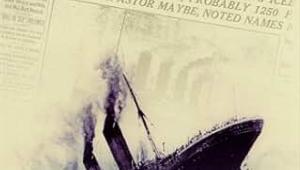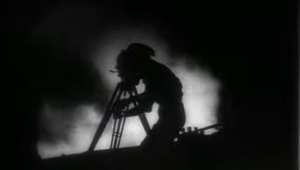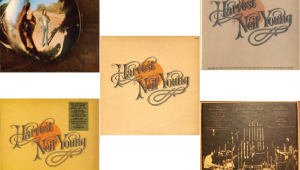I love these bizzaro world tales with their tangents, digressions and objections. It’s like some raconteur keeping you awake long after the party has peaked and you know you should go to bed but you just don’t want the show to end so you keep listening and enjoying the crazy. Main reason I come back to this site every few days; see what the good doctor has cooked up.
The Maestro and the Cellist
Another entry covered how the average English consumer handled the introduction of electricity. This transition had a near total lack of standards. There was no third-wire ground for safety, wires were poorly insulated (or not insulated at all), people overloaded their likely single electrical outlet, and dozens of independent electrical companies, each using their individual choice of either AC or DC and at different voltages, served different neighborhoods. Consumers, accustomed to gaslighting, were told there was now no need to light a match to turn on their new electric lights! Some absolutely wild electric products also resulted, including an electric tablecloth complemented by special electric table lamps. Each lamp had probes on the bottom; simply insert them through the tablecloth so they could make contact with the live electric wires inside the cloth and voila, instant electrocution, with table spills on-hand to further enliven the meal!
These and other similar entries make for great fun today (though far less fun for the victims of the time). But one unrelated documentary I recently discovered is far more serious. Running for 86 minutes, The Maestro and the Cellist of Auschwitz (a German production with subtitles and translations where needed) covers the very different stories of two musicians during World War II. The first involves the symphonic classical music environment in Germany during the Nazi era. As you might expect, the music performances were tightly controlled by Hitler's Minister of Propaganda, Joseph Goebbels. His authority extended into all aspects of German culture. During the war he even approved and supported the making of a propaganda-filled, German language film of the 1912 Titanic disaster. Goebbels' powers also extended to music. The Nazi's deemed much modern symphonic music, such as atonal compositions, to be either unacceptable or even degenerate, especially if it came from Jewish composers.
The maestro of the title here was Germany's Willhelm Furtwangler, arguably one of the most storied and feted symphonic and opera conductors of the 20th Century. By 1935 Nazi policies had begun to squeeze German society, but were not yet totally smothering. Nevertheless, Jewish orchestra members and other Jewish musicians were already being thrown out of work, and many who could escape did — though emigrating out of Germany was costly. That year the already renowned, non-Jewish Furtwangler was offered the position of music director of the New York Philharmonic, which would have allowed him an easy means to leave Germany while that was still possible. But under Nazi pressure (not to mention some objections in New York), likely simple loyalty to his German fans and home, and more than a dash of political naivete about where the Nazis were headed, he declined.
After the war, and following a 2-year suspension from performing by the Allies, he was investigated, cleared of collaboration (declared as simply a "follower," which entailed no further punishment) and allowed to continue his musical career. He died in 1954, and despite his past in the pre-war and war years, is still considered one of the greatest conductors in modern history. Perhaps the greatest.
A long but engrossing writeup in Wikipedia about Furtwangler's career paints a more thorough picture of the conductor's activities in Nazi Germany. He was never a member of the Nazi party and often exhibited a lack of sympathy to with his Nazi overlords. He performed some risky maneuvers over the years to avoid being used in Nazi propaganda. Only his fame and reputation kept him alive. According to Wikipedia, he also helped both Jewish and non-Jewish friends, many of them fellow musicians, come safely through that same, potentially fatal era. While some of his risky activities might be based on hearsay (including some apparently heated, in-person disagreements with both Hitler and Goebbels that could only have only occurred in the strictest privacy) there's enough positive information on Wikipedia (with ample footnotes) to confirm why Furtwangler was cleared of punishable guilt after the war.
Like most Germans at the time, Furtwangler, and his musician friends and co-workers, while personally exposed to the Nazi's stifling suppression of human rights, were most likely unaware of what was happening in the Nazi death camps. That was probably true of most ordinary Germans, apart from those who lived near those often remote facilities. But one musician who most certainly was aware, and the cellist in the title of the documentary, was Anita Lasker-Wallfisch. Her story is just as compelling, though certainly far grimmer, than Furtwangler's. As a young girl she had received good training in the cello, but that training was derailed when music teachers in Germany refused to give lessons to Jews. She ended up in Auschwitz, but was one of its more fortunate inmates. She had brought her cello with her (though one can only imagine how, as the cello isn't exactly a small instrument) and ended up playing in a camp orchestra made up entirely of Jewish inmate-musicians.
How she survived was a matter of pure chance. When she arrived, another female inmate, assigned to question the newcomers, asked Anita what she did before arriving. She said she played the cello. The interviewer was ecstatic; she ran one of the concentration camp's small orchestras and needed more musicians (I suspect that if a band got too small and ineffective that would mean the end for its members). It's well known that these camps had orchestras. They played for the guards and also for the new inmates, the latter often on their arrival as they were being separated out (though they didn't know why) into a line for an immediate trip to their deaths or as hard laborers as long as they were able. If this all reminds you a little of the ship's band playing as the Titanic was sinking, the analogy is apt. There are grim scenes of the camps in this part of the documentary but I've seen far worse elsewhere. The most cringe-inducing yet moving scene here was simply the camera panning across an immense pile of empty shoes.
I don't know how long ago this documentary was made, but Lasker-Wallfisch is still alive at age 98 (according to Wikipedia) and gave a speech as recently as 2020 in which she said, "I owe it to music that I am here." To paraphrase her affecting comment at the end of the documentary, "The Nazis tried to destroy music. But you cannot destroy music. It's impossible!"
- Log in or register to post comments


YouTube really is a treasure trove of content, despite those annoying ads. It's like a digital library with an endless array of topics, right? Those British documentaries sound fascinating, especially the one about the hazards in English homes. The story about the arsenic-laced wallpaper is both intriguing and alarming – just goes to show how much we've learned over time. Makes me wonder what hidden dangers we might find in homes in Greece.

Pozdravljeni, sem redni igralec na igralnih avtomatih in bi rad priporočil spletno stran. Topcasinoslovenja je kraj, kjer zaslužim denar in se odlično zabavam. Tukaj je nekaj zelo zanimivih igralnih avtomatov, v katerih boste zagotovo uživali. Na voljo je veliko bonusov in ponudb za novince. Stran in aplikacija sta odlični. Tukaj je stran https://topcasinoslovenija.com/casino-igre/, kjer se lahko registrirate in začnete zmagovati).

Wow, you can certainly find some interesting videos on Youtube. I am always impressed by Youtube channels with a commitment to detail and great storytelling. My team at Gutter Cleaning Coventry love discussing history, and I’m sure they will be pleased when I tell them about this story.

Discover the thrill of gaming at pokie net 85 - https://the-pokiesnet.com/ ! With its intuitive interface and diverse game selection, it's the perfect place to relax and earn money. Every spin brings the potential for significant rewards, making it a must-visit destination.
































































